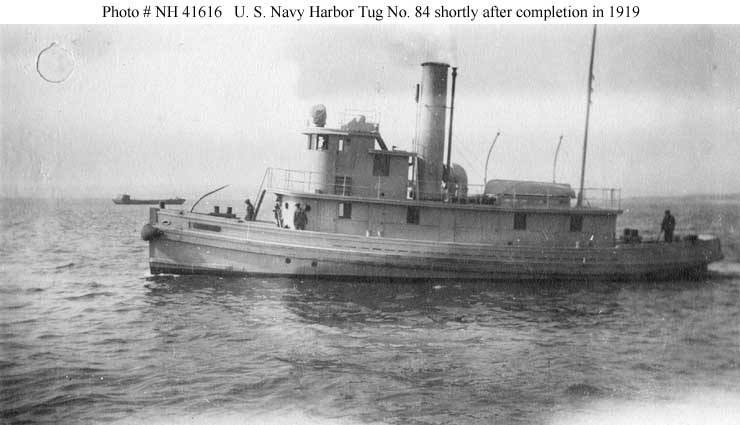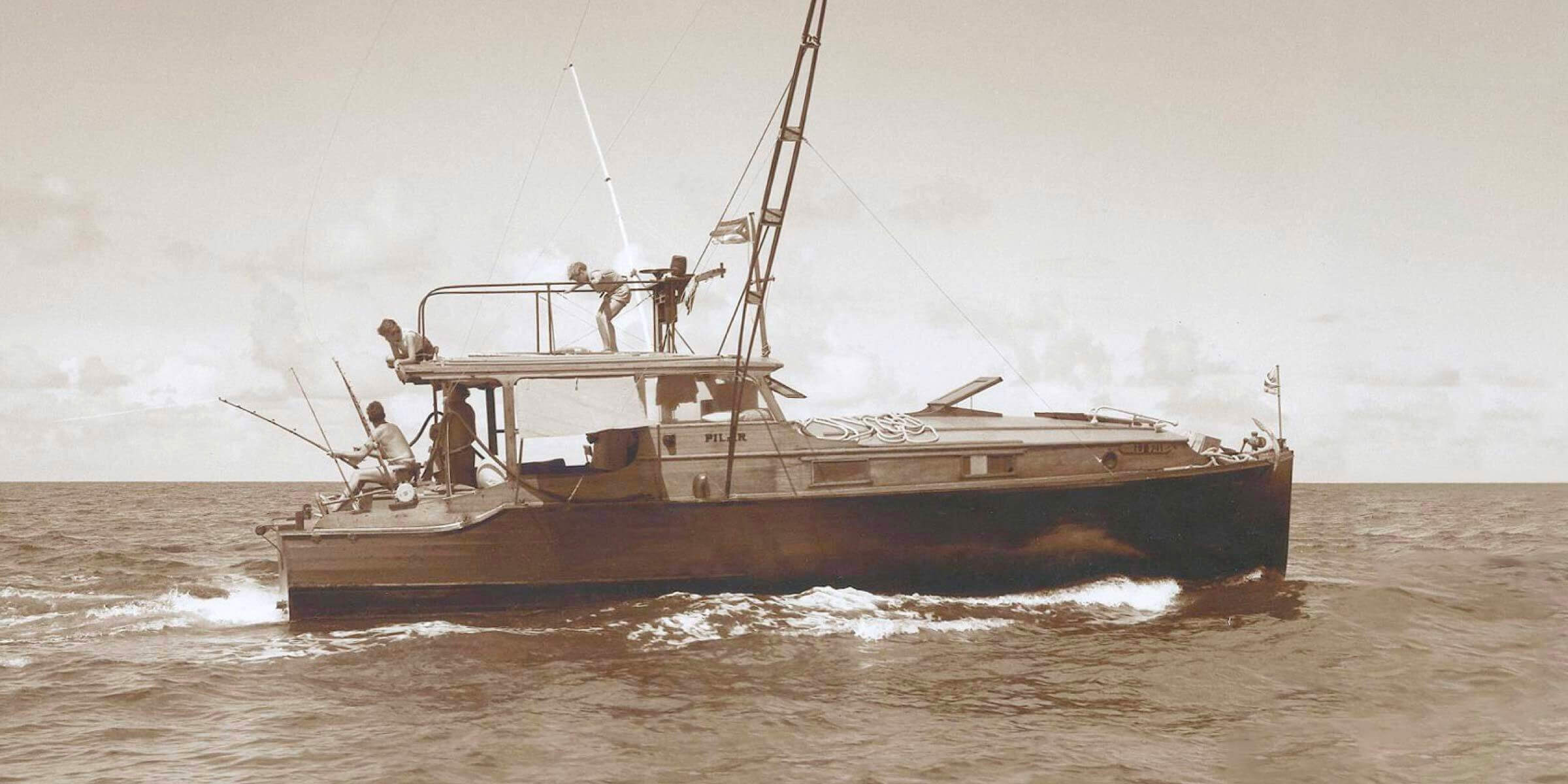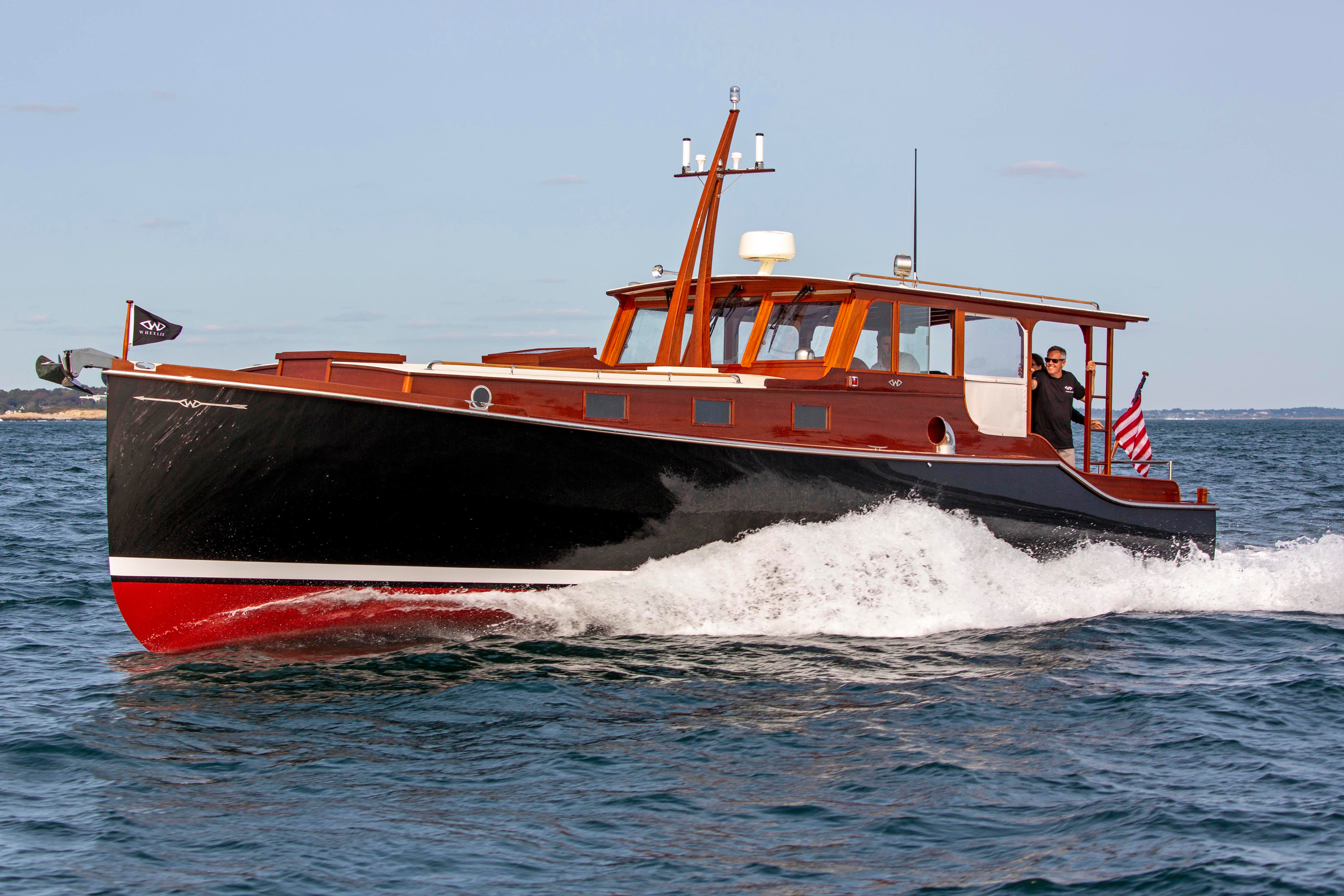Running a business is not for the faint of heart. Despite the best laid business strategies and decades of hard work, success can ebb and flow with the tides of economics and consumer tastes. The Wheeler family behind Wheeler Shipbuilding Corporation and Wheeler Yachts knows this all too well. In the past century they’ve weathered countless storms and hardships; yet emerged with a brand that has stood the test of time.
A Fire that Sparked a Rebirth
Howard E. Wheeler Sr. began his foray into the maritime industry when he founded Wheeler’s Marine Railways as a boat hauling and storage yard in Bensonhurst, Brooklyn, in 1910. When he landed a Navy contract for submarine chasers during World War I, he pivoted to shipbuilding and never looked back.

A second military contract in 1919 for 24 mine yawls enabled Wheeler to purchase land at the foot of Cropsey Avenue in Brooklyn. Business was booming, until one fateful day a fire burned down Wheeler Shipyard’s mill. Without insurance, it was a devasting blow to the company. But Wheeler loved what he did and believed in his product, so he fought his way back and rebuilt. For the company’s second act, Wheeler moved his boatyard to Coney Island Creek and his five sons came aboard one by one. By 1924, they had rebounded enough to enter a vessel, a 20-foot launch boat, into their first motorboat show. The Wheelers would go on to produce hundreds of classic wooden Playmates from that Brooklyn yard that earned them a reputation for quality, reliability and rugged performance.
Target Marketing at Its Finest
In 1933, Howard E. Wheeler Sr. stuffed a flyer for that year’s Playmate model boat into an envelope and addressed it by hand to “Mr. Ernest Hemingway, Box 406, Key West, Florida.” That fortuitous solicitation travelled all the way to Europe and Africa with the famous author, burning a hole in his pocket as he worked as a reporter throughout the continents.
Upon returning to America, Hemingway took a $3,000 advance from Esquire Magazine and went straight to the Wheeler Shipyard to put a deposit on Hull No. 530, a wooden ’38 Playmate he named Pilar. When the boat was completed in May 1934, the final price tag came to $7,455, and Hemingway had Pilar delivered to the Merrill Stevens boatyard in Miami. From there, Hemingway steered the boat to its first home in Key West, Florida. A few years later in 1939, Hemingway moved Pilar to Havana, Cuba, where she was docked for the next 21 years. Wheeler’s foresight to target those that appreciated style and performance paid off. Not only was “The Old Man and the Sea” written aboard Pilar, Hemingway used his beloved Wheeler yacht to hunt for Nazis and revolutionize sportfishing by turning Pilar into one of the first sportfishing vessels in U.S. naval history.

Charting a New Course Post World War II
Like many shipbuilders in the 1940s, Wheeler Shipyard shifted production from pleasure yachts to military ships to support the war effort. The company converted the Long Island Railroad spur that was leased by the City of New York to establish operations in Whitestone, NY, on the East River. In total, the Wheelers built 420 vessels for the U.S. military that were used in both World Wars and earned prestigious awards for its contributions.
For a short time after WWII, the company consolidated operations at its larger facility in Whitestone. With a $2 million loan from Brooklyn Trust Co., Wheeler converted the Whitestone plant to a yacht-building operation that could accommodate high production volumes for Playmates and new models like the Sunlounge.
While these moves were intended to streamline costs and grow the business, misfortune befell the Wheelers yet again.
On January 21, 1946, 750,000 members of the United Steelworkers Union went on strike. They picketed outside steel mills in 29 states, shutting down nearly every plant in the country, and setting off the largest strike ever in U.S. history. The resulting steel shortage delayed the conversion of the Whitestone plant and the company’s ability to produce their boats. At about the same time, the Wheeler brothers were sued by the U.S. government for financial matters relating to the war effort. They lost their case in the U.S. Court of Appeals, which pushed Wheeler to file for Chapter 11 bankruptcy in 1947, and ultimately shutter the Whitestone and Brooklyn yards.
The Wheeler Yacht Company was reorganized in the wake of the bankruptcy filing and they purchased Dawn Boat Works in 1948 and moved their operations to Clason Point in the Bronx. For the next 15 years, the Wheelers produced thousands of luxury, high-end yachts in a wide array of sizes from this location, including the relaunch of the Playmate series.
Shifting Tides
The boating industry experienced a boom in the 1950s thanks to the rising middle-class and their appetite for pleasure watercraft. Customers wanted boats capable of higher speeds, and fiberglass hulls quickly gained popularity over their higher maintenance wooden forebearers. To survive, Wheeler Yacht Company would have to adapt.
In 1960, the company created Wheeler Fiberglass Boat Corp, at Clason Point and began producing fiberglass models including the 25- and 28-foot Sea Skiff. But the shift from wood to fiberglass came with many challenges — and much higher upfront costs. New molds had to be built and the fire department mandated the installation of expensive fire suppression systems due to the flammability of polyester resin, a component of fiberglass.
Three of Howard’s sons, Wesley, Eugene and Robert, were at the helm of both companies now. They took Wheeler Fiberglass Boat Corporation public in a $400,000 stock offering that same year. Unfortunately, this capital injection was insufficient to ramp up construction and service its debt. But the final blow that sunk the Wheelers’ fiberglass operations was dealt by the fire department, who shut down the facility due to a lack of fire safety equipment.
The End of an Era
On an unseasonably warm Good Friday in April 1963, a couple of brush fires broke out in the Bronx within two hours of each other. The first began innocuously enough along the shore of Pugsley Creek, near Clason’s Point, but strong winds stoked the flames and carried their embers into the Wheeler Shipyard around 1:30 p.m. Due to multiple fires in the vicinity, the New York Fire Department’s resources were strained, so only one unit initially responded.
The firemen on the scene at Wheeler Shipyard watched in horror as the wooden fence surrounding the property kindled the flames and quickly spread to the wood facility where the lacquer was stored. By the time they called for backup, the fire had enveloped a two-story corrugated metal structure and several adjoining one-frame buildings in the boatyard. As the flammable ingredients fed the tenacious flames, the incident escalated into a raging four-alarm fire. Less than two hours later, the fire was declared under control, but a family business that was decades in the making had been brought to its knees. Most of Wheeler’s boatyard and five pleasure crafts, including a 55-foot yacht, were completely destroyed.
This unfortunate event marked the beginning of the end for the Wheeler Yacht Company. All of Wheeler’s drawing-board plans and most of its historical records had been turned to ash. Production was moved to Toms River, New Jersey where land was cheaper, but in the mid-60s, demand for wooden boats had dried up and competitors had eaten most of Wheeler’s market share. After more than half a century in business and making over 3,500 hulls, the renowned shipbuilder laid its final keel in 1965.
Wheeler Sails Again
With much of the Wheeler history lost to the fire, the family kept its legacy alive by passing down stories to friends and relatives. And then fate gave Howard Wheeler’s great grandson, Wes Wheeler, a call.
Around 2012, Oscar-nominated actor, Andy Garcia, was working on a movie script about the friendship between Ernest Hemingway and Gregorio Fuentes, the Cuban fisherman who was the inspiration for Santiago in “The Old Man and the Sea.” As Garcia hammered out the plot, the actor realized his film needed to cast a very important character: Pilar.
Garcia contacted Wes Wheeler over the phone and enthusiastically shared his vision for a movie with an exact copy of Hemingway’s beloved yacht. Excited to resurface this fascinating era of family and nautical history, Wes scoured the U.S. and found an original 1933 Wheeler Playmate named Elhanor. At 34 feet, she was four feet shorter than Pilar, but the two yachts shared enough characteristics that Moores Marine in Beaufort, North Carolina was contracted to restore Elhanor into a stand-in for Pilar. The new “Pilar” was slated to be used for filming in Puerto Rico, but the movie floundered in production and never made it to the big screen. While not the outcome anyone was hoping for, the experience reminded Wes that boatbuilding was in his DNA.
Seeing one of his family’s yachts restored and gracing the open waters had left Wes inspired. He teamed up with Ernest’s niece, Hilary Hemingway, to travel to Cuba where they were granted permission to take detailed measurements of the original Pilar. Returning to the U.S., Wes confirmed that the measurements matched the original brochures, so he embarked on a mission to make an exact copy of Pilar. Wes reached out to a well-known naval architect, Bruce Marek, to create a modern-day version of his family’s historic wooden yacht. Renowned naval architect, Bill Prince, was hired to complete the design and Steve White’s team of boat builders at Brooklin Boat Yard constructed Legend, the first boat produced by the newly launched Wheeler Yacht Company in 2020.

Thanks to Wes’ vision and tenacity, the Wheeler name has returned to the high seas with the Wheeler ’38 and the new Wheeler ’55. With their luxurious appeal and 21st century technology, the beloved brand has risen again for the next generation of boaters to enjoy the water aboard a classic wooden yacht.
“Our great grandfather and three of his five sons built some of the finest yachts of their time. They spared no cost and used only the finest mahogany, teak and white oak available. They were the envy of the industry in their day. The new yachts we are building today will be built with the same passion for quality and performance in mind: they are American-designed and American-built.”
~Wes Wheeler
